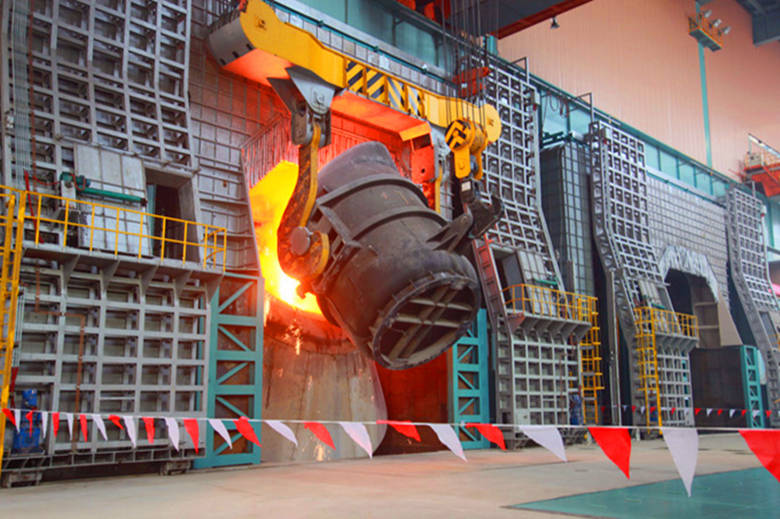Effect of Chemical Elements on Properties of Steel Plate
Iron-carbon alloy with carbon content less than 2.11% is called steel. Apart from chemical components such as iron (Fe) and carbon (C), steel also contains a small amount of silicon (Si), manganese (Mn), phosphorus (P), sulfur (S), oxygen (O), nitrogen (N), niobium (Nb) and titanium (Ti) The influence of common chemical elements on steel properties is as follows:
1. Carbon (C): With the increase of carbon content in steel, the yield strength and tensile strength increase, but the plasticity and impact strength decrease; However, when the carbon content exceeds 0.23%, the weld-ability of steel deteriorates. Therefore, the carbon content of low alloy structural steel used for welding generally does not exceed 0.20%. The increase of carbon content will also reduce the atmospheric corrosion resistance of steel, and high carbon steel is easy to corrode in open air. In addition, carbon can increase the cold brittleness and aging sensitivity of steel.
2. Silicon (Si): Silicon is a strong deoxidizer in steel making process, and the content of silicon in killed steel is generally 0.12%-0.37%. If the content of silicon in steel exceeds 0.50%, silicon is called alloying element. Silicon can significantly improve the elastic limit, yield strength and tensile strength of steel, and is widely used as spring steel. Adding 1.0-1.2% silicon into the quenched and tempered structural steel can increase the strength by 15-20%. Combined with silicon, molybdenum, tungsten and chromium, it can improve corrosion resistance and oxidation resistance, and can be used to manufacture heat-resistant steel. Low carbon steel containing 1.0-4.0% silicon, with extremely high magnetic permeability, is used as electrical steel in electrical industry. The increase of silicon content will reduce the weld-ability of steel.
3. Manganese (Mn): Manganese is a good deoxidizer and desulfurizer. Generally, steel contains 0.30-0.50% manganese. When more than 0.70% manganese is added to carbon steel, it is called "manganese steel". Compared with ordinary steel, it not only has enough toughness, but also has higher strength and hardness, which improves the harden-ability and hot work-ability of steel. Steel containing 11-14% manganese has extremely high wear resistance, and is often used in excavator bucket, ball mill liner, etc. With the increase of manganese content, the corrosion resistance of steel is weakened and the welding performance is reduced.
4. Phosphorus (P): Generally speaking, phosphorus is a harmful element in steel, which improves the strength of steel, but reduces the plasticity and toughness of steel, increases the cold brittleness of steel, and deteriorates the welding performance and cold bending performance. Therefore, it is usually required that the phosphorus content in steel is less than 0.045%, and the requirement of high-quality steel is lower.
5. Sulfur (S): Sulfur is also a harmful element under normal circumstances. Make the steel hot brittle, reduce the ductility and toughness of the steel, and cause cracks during forging and rolling. Sulfur is also detrimental to welding performance and reduces corrosion resistance. Therefore, the sulfur content is usually less than 0.055%, and that of high-quality steel is less than 0.040%. Adding 0.08-0.20% sulfur to steel can improve mach-inability, which is usually called free-cutting steel.
6. Aluminum (Al): Aluminum is a commonly used deoxidizer in steel. Adding a small amount of aluminum to steel can refine grain size and improve impact toughness; Aluminum also has oxidation resistance and corrosion resistance. The combination of aluminum with chromium and silicon can significantly improve the high-temperature peeling performance and high-temperature corrosion resistance of steel. The disadvantage of aluminum is that it affects the hot working performance, welding performance and cutting performance of steel.
7. Oxygen (O) and nitrogen (N): Oxygen and nitrogen are harmful elements that can enter from the furnace gas when the metal is melted. Oxygen can make steel hot brittle, and its effect is more severe than that of sulfur. Nitrogen can make the cold brittleness of steel similar to that of phosphorus. The aging effect of nitrogen can increase the hardness and strength of steel, but decrease the ductility and toughness, especially in the case of deformation aging.
8. Niobium (Nb), vanadium (V) and titanium (Ti): Niobium, vanadium and titanium are all grain refining elements. Adding these elements appropriately can improve the steel structure, refine the grain and significantly improve the strength and toughness of steel.








